Scottish raspberry jam, made with locally grown raspberries. Nothing beats homemade jam, great spread on freshly baked scones or fantastic layered with pastry and almond in a Bakewell tart!
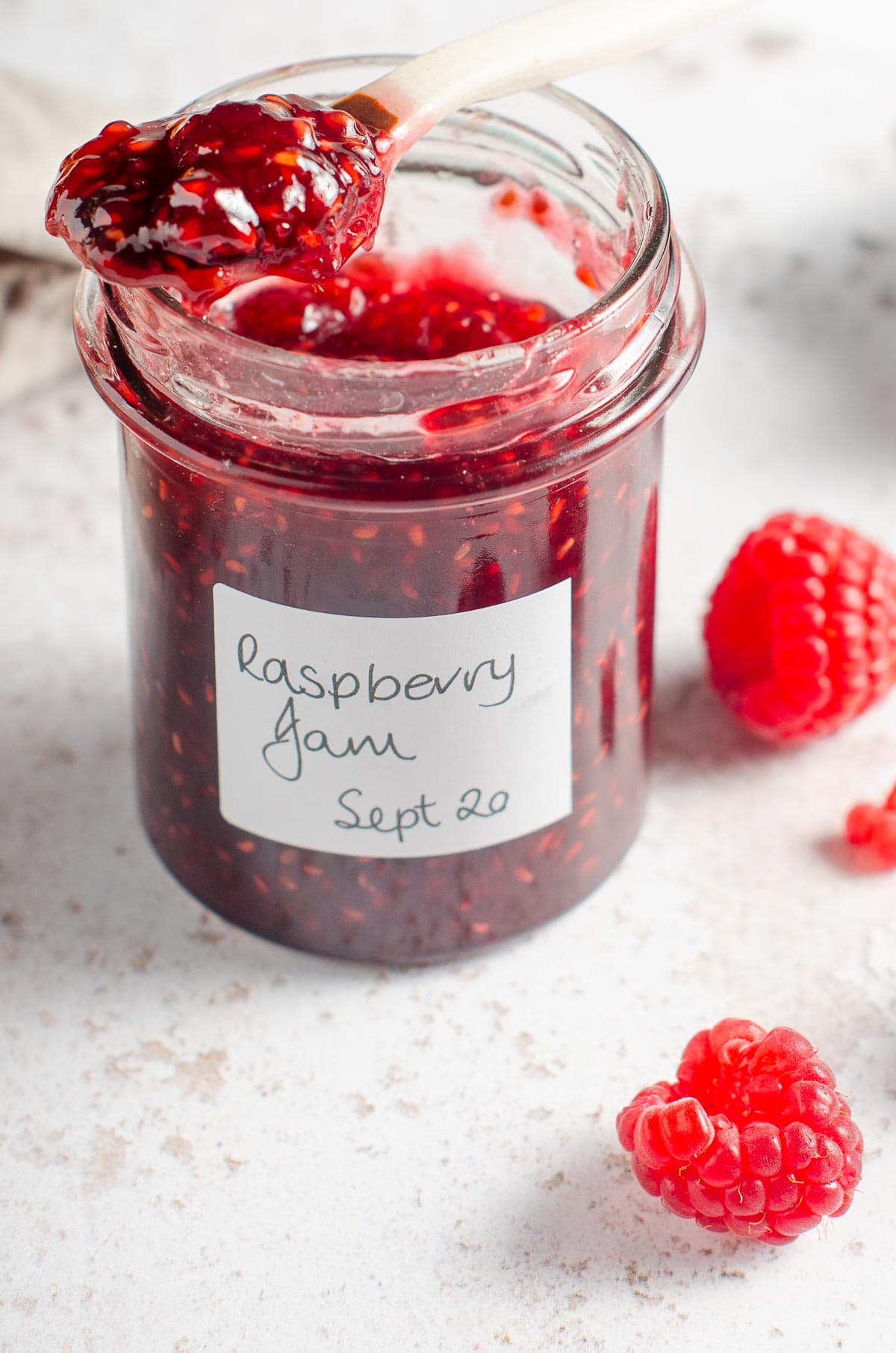
Scottish raspberry jam is one of my all time favourite jams. Living where I do, in the North East of Scotland, I am lucky enough to have sweet Scottish raspberries available to buy right on my doorstep.
I love berries, with raspberries being a real favourite, alongside Scottish strawberries. Raspberries have a sharpness to them which balances out the sweetness, making them less sweet than a strawberry.
As a family we eat a lot of Scottish soft fruits over the summer months. When you can pick up local grown berries so easily they tend to get snacked on or eaten in desserts.
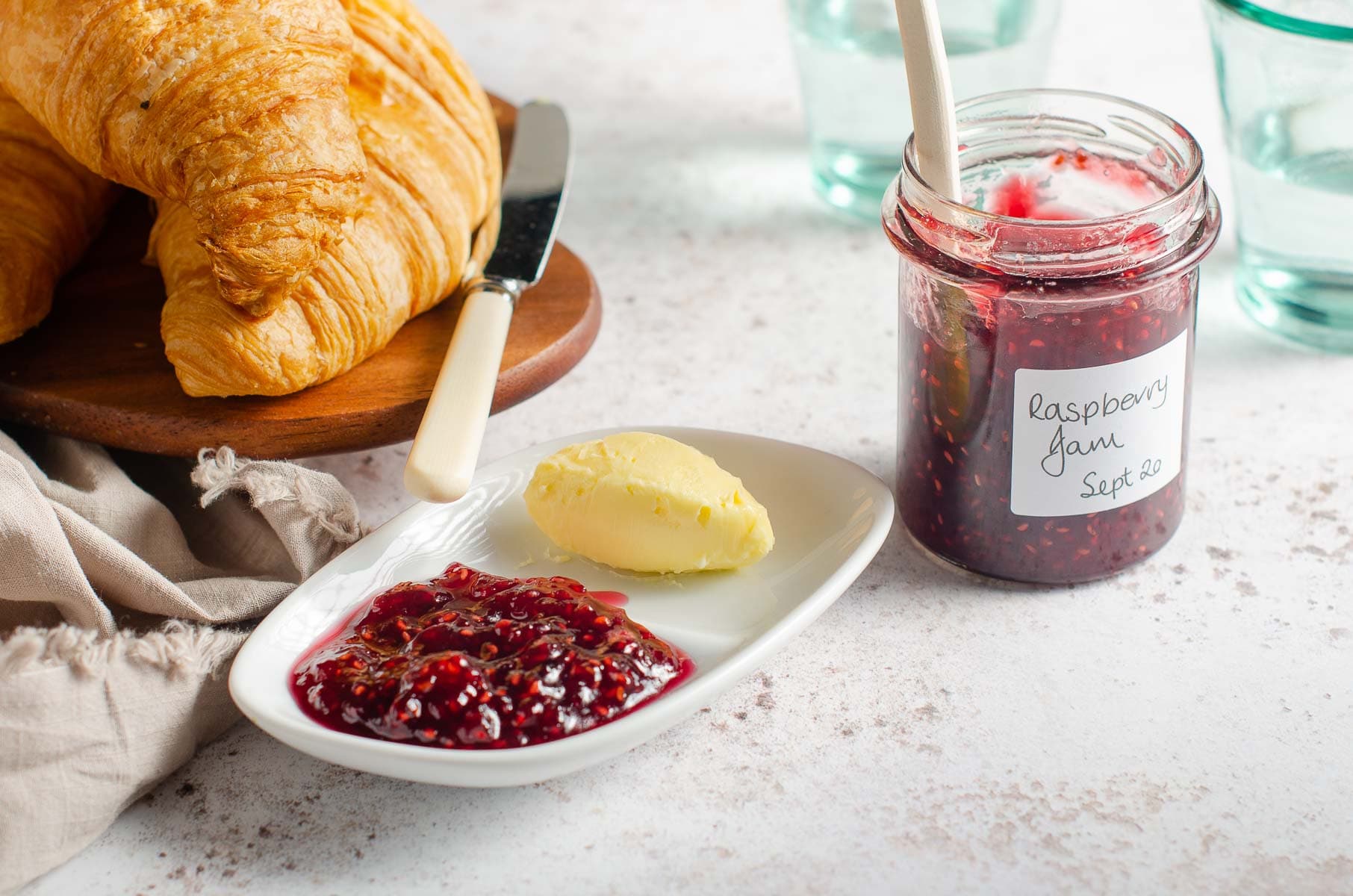
Buying jam berries?
However, I always buy tubs of jam berries from my local farm shop when I'm over buying their beautiful soft berries and delicious ice-cream.
Jam berries are often a lot cheaper to buy than boxes of berries off the shelf. They taste no difference, but they are often different sizes or shapes.
Buying jam berries is definitely the most cost effective way to make jam, unless you grow your own berries.
Rule of thumb: fruit to sugar ratio!
The normal rule of thumb for jam is equal quantities of fruit to sugar. I add the juice of a lemon to add the pectin necessary to set the jam.
How to make raspberry jam?
Making jam is easy if you follow the process. Homemade raspberry jam tastes better than many shop bought varieties and there is a real satisfaction making your own.
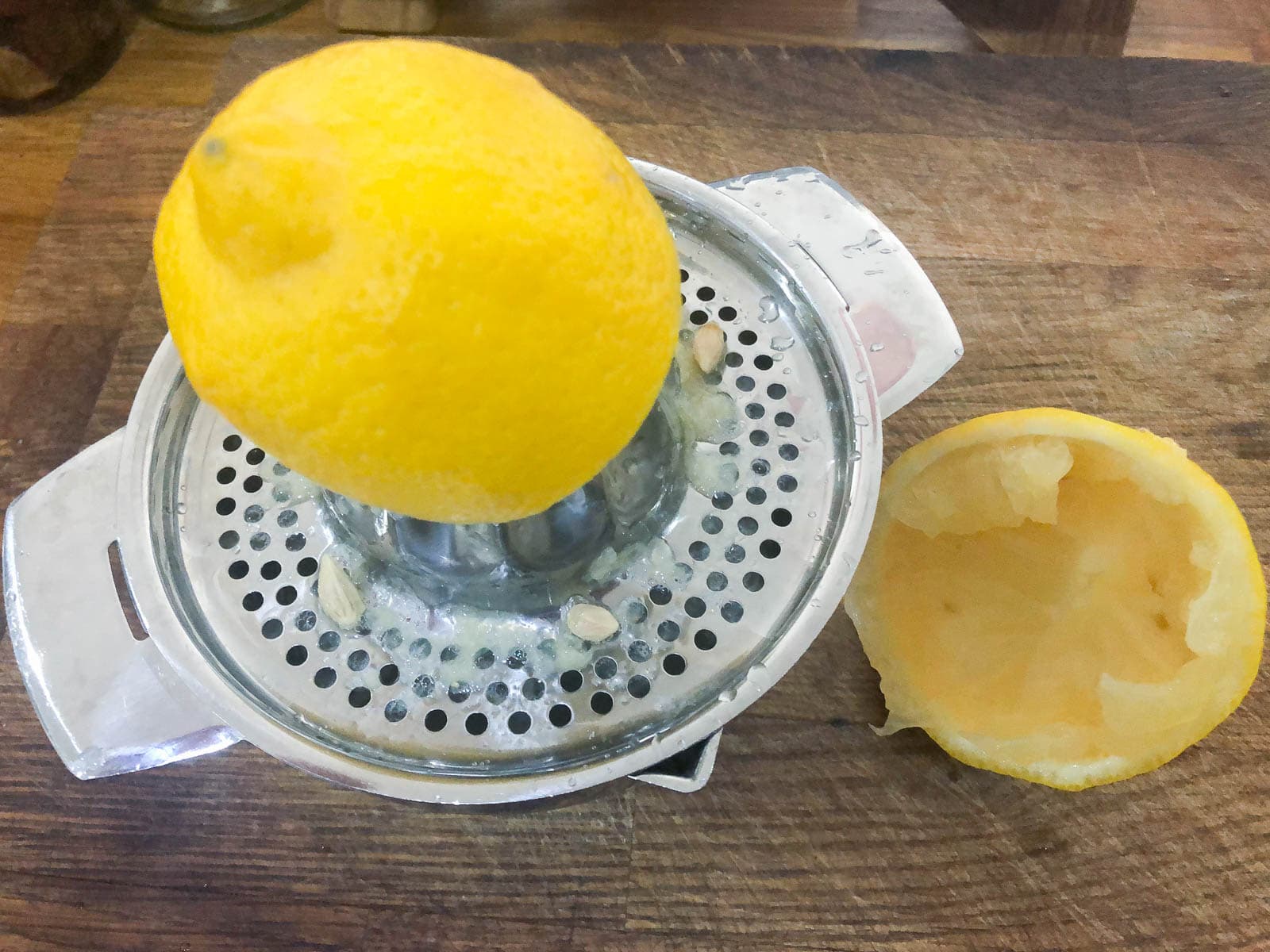
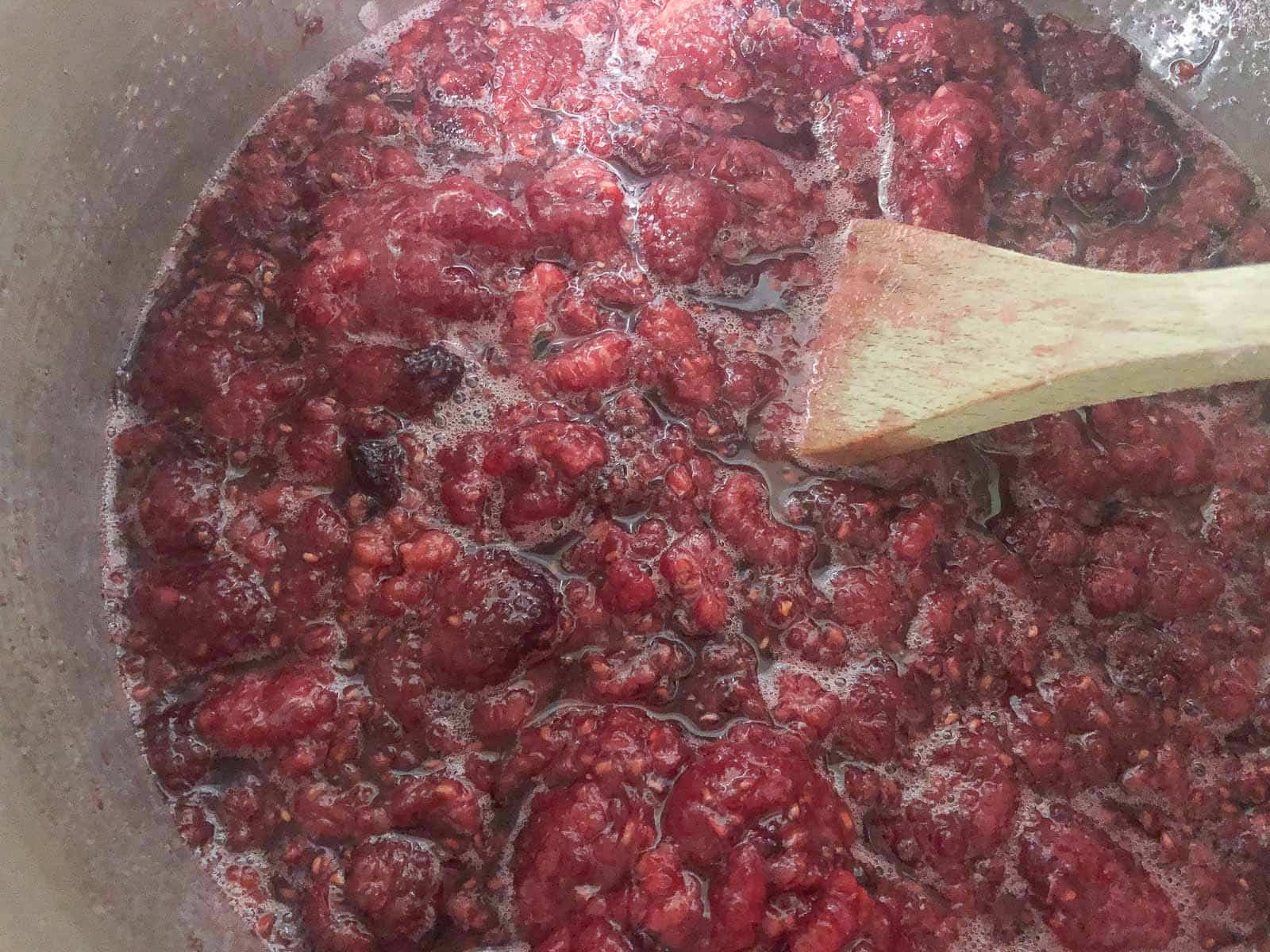
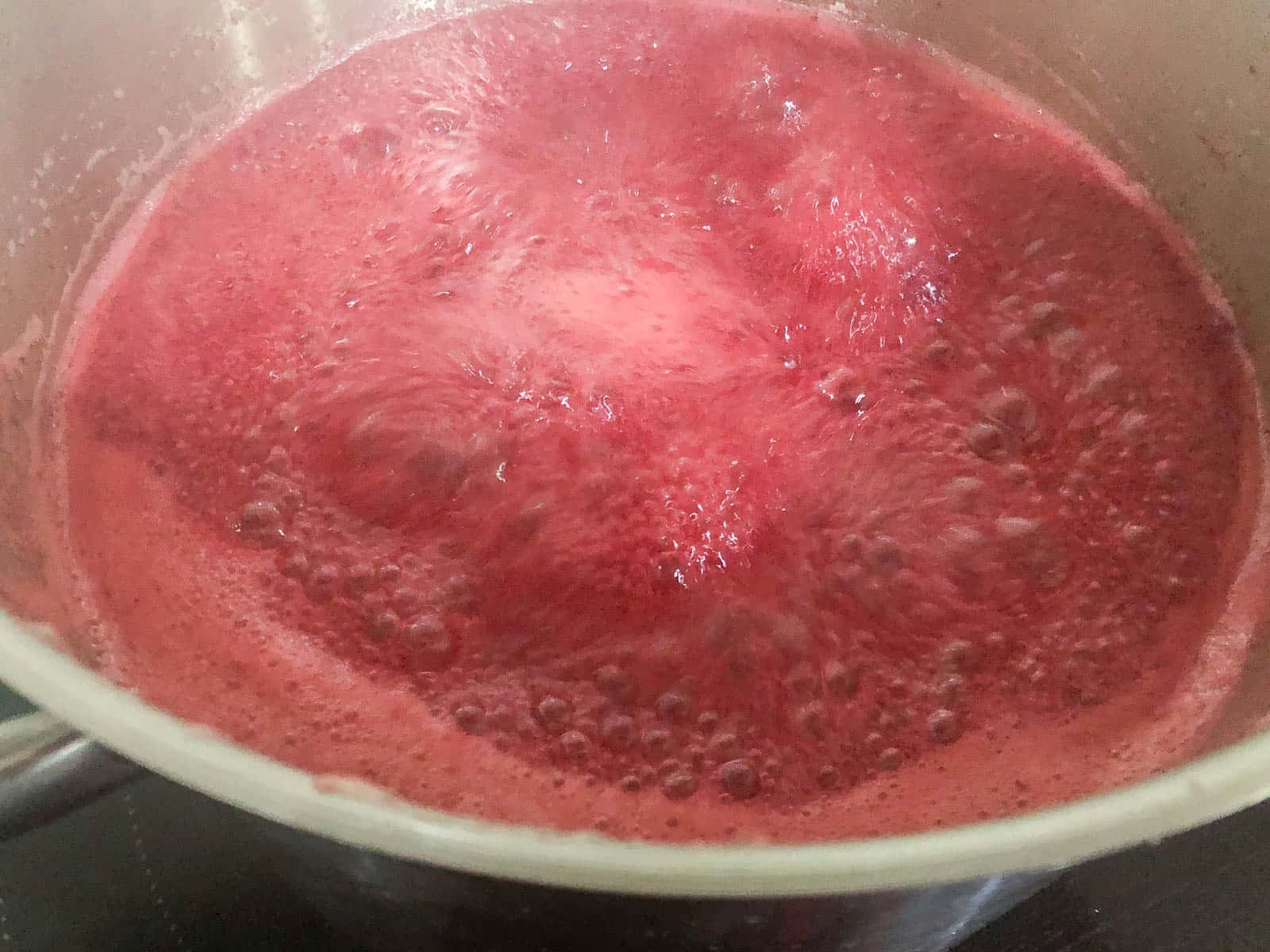

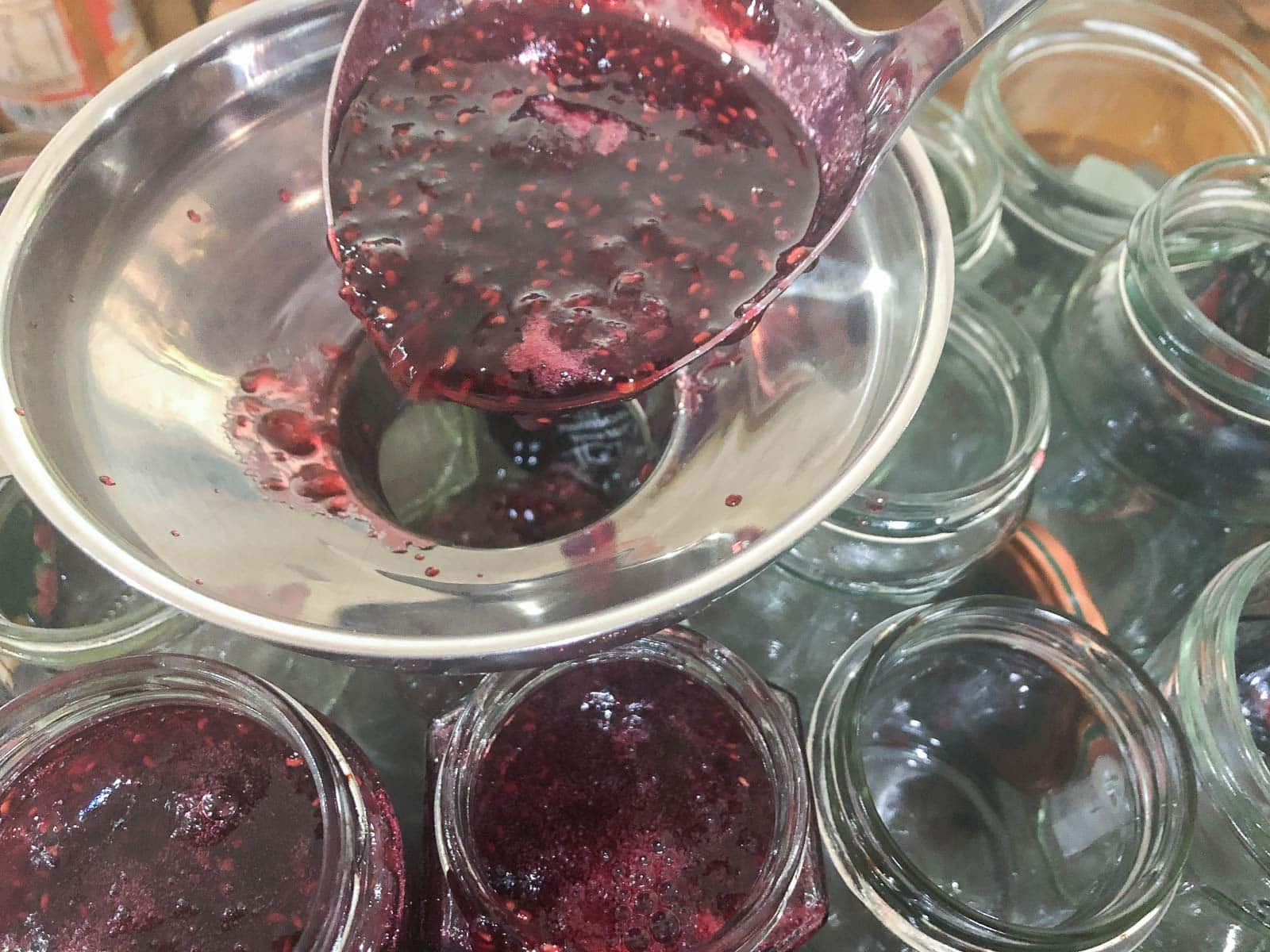
When the jam is ready decant into clean, sterilised jam jars. Again further guidance on how to sterilise jars is covered later in the post.
I recommend using a jam funnel to decant the jam safely into the jars.
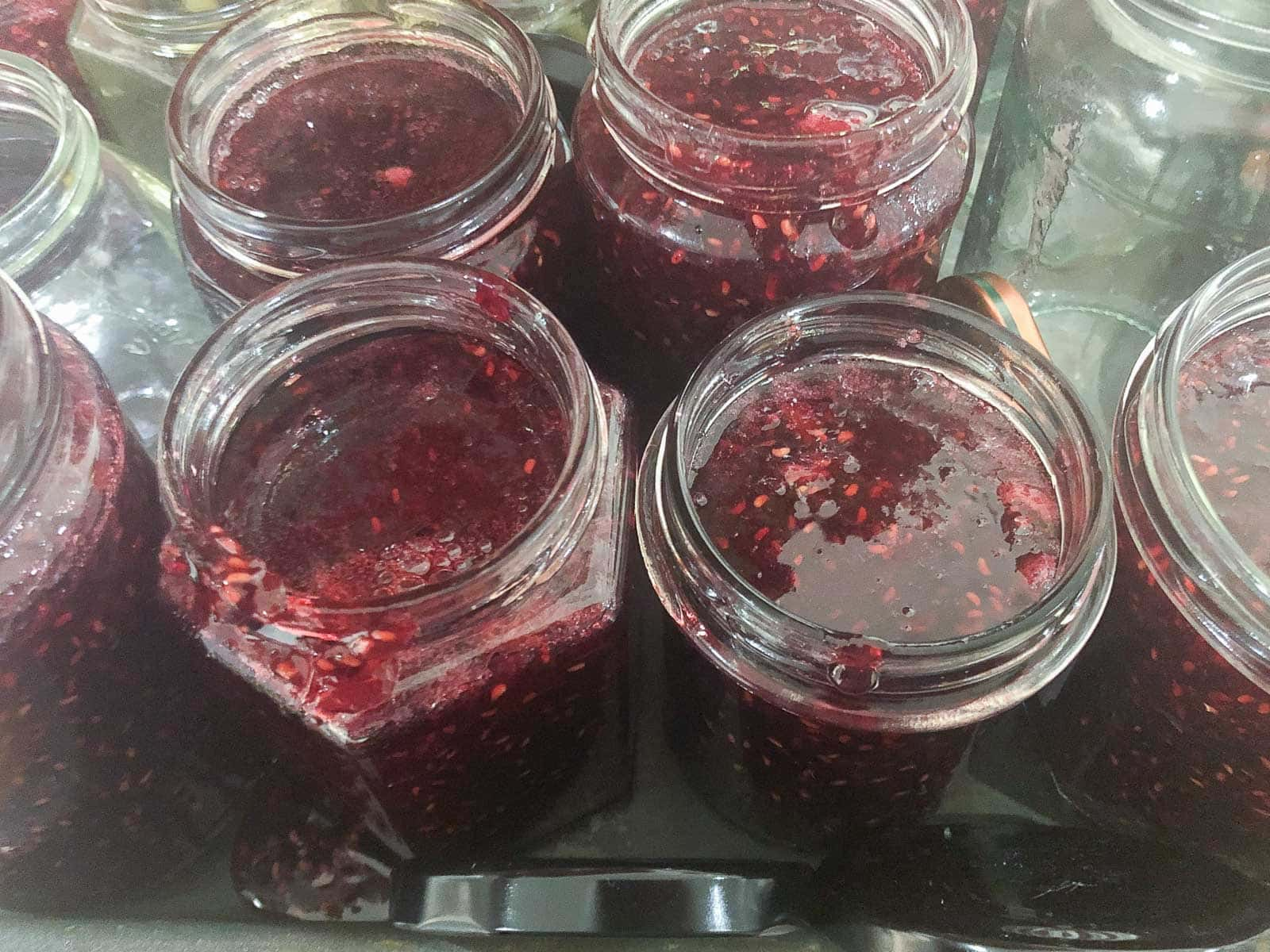
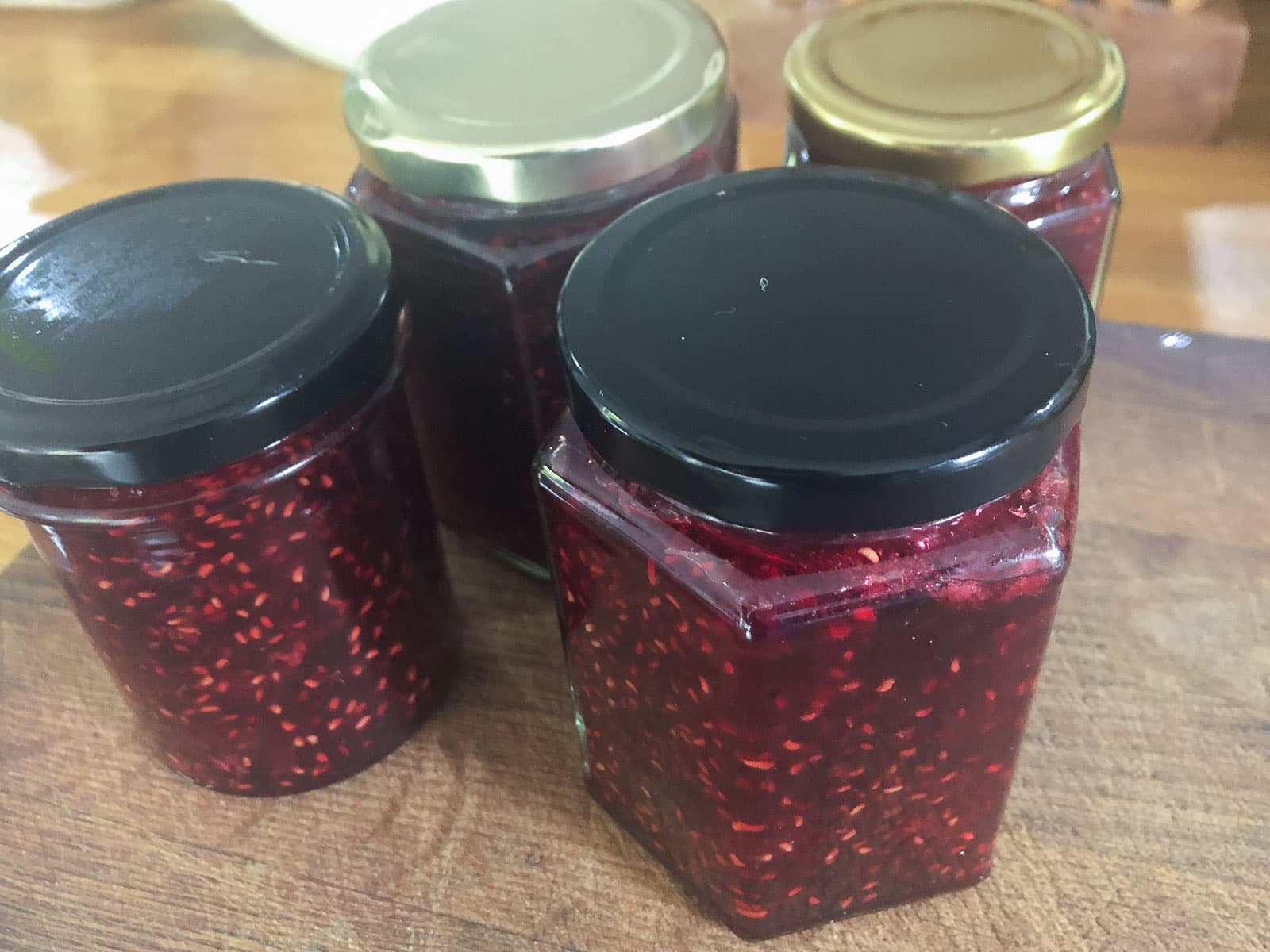
Jam sugar:
Sugar is used to preserve the fruit, it is what allows you to keep and store jam. Traditionally jam making uses equal amounts of sugar to fruit, or in the case of a jelly a pint of fruit juice to a pound of sugar. The amount of sugar used determines the set of the jam. I have always used granulated sugar when making jellies and jams. Granulated sugar is cheaper and melts quickly.
Some fruits like apples, blackberries and blackcurrants are naturally high in pectin, meaning that the jam will set easily. (However, if making something like Scottish raspberry jam, you will need to add in pectin and this is done by adding a little lemon juice to the raspberries and the sugar.)
You can buy jam sugar which has added pectin, however in my experience it can result in too firm a set. For this reason I prefer to use granulated sugar and if necessary add a little lemon juice. It is also a lot cheaper.
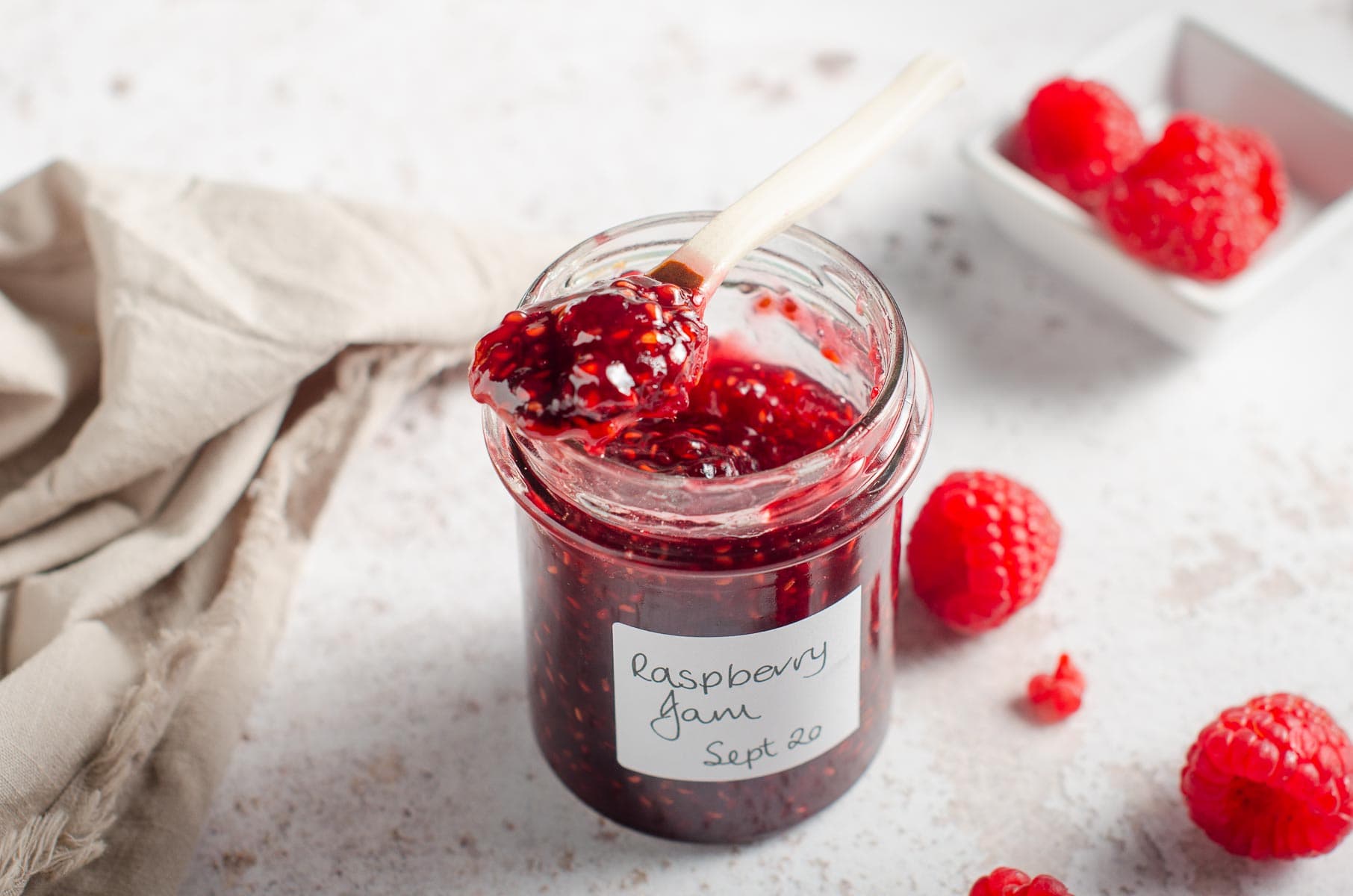
Testing the set of jam or jelly?
Knowing when jam and jelly is ready to take off the heat and testing the set of jam is the trickiest part of the whole process. One that you get better at as you become more experienced.
When testing the set take the pan off the heat to stop the jam from overcooking. If you think the jelly is a little loose then return the pan to the heat, bring it back to a rolling boil for 10 minutes and test again.
I always use a jam thermometer. It really is the only way to check your jelly or jam has reached the required setting temperature. The setting point for jam is 104.5C/220F.
Wrinkle test:
I like to use the wrinkle test. Place a plate in the freezer before you started making jam or jelly, take it out when you think the jam or jelly is almost ready.
Spoon some jam/jelly onto the cold plate, pop it back in the freezer for a minute or two, then take it back out and push the jam with your finger to see if it wrinkles. If it does then it's ready. For a firm set the wrinkle will hold in place. For a softer set the jam/jelly will just wrinkle.
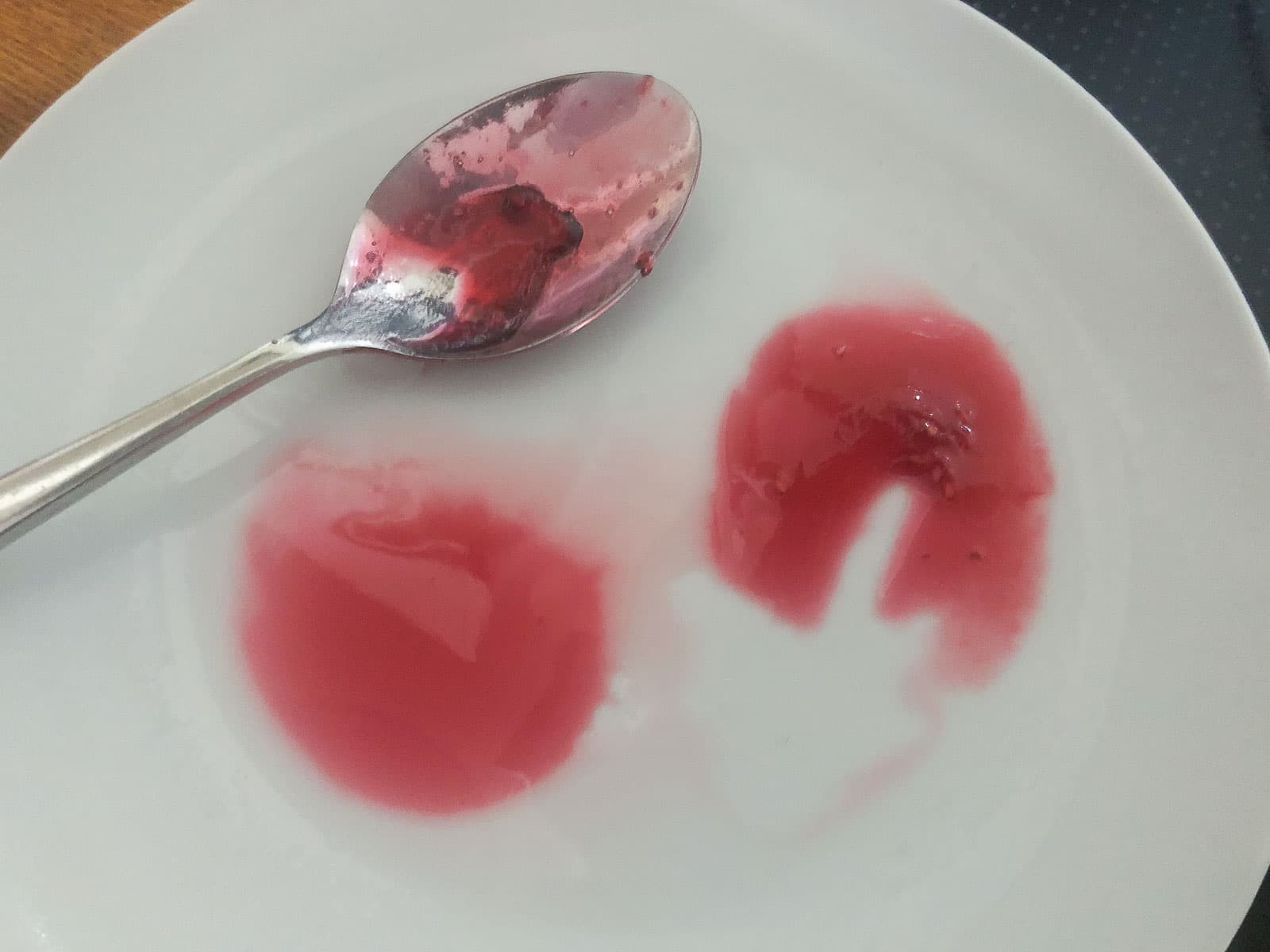
The spoon of jam on the left hand side of this photo shows jam that is not quite ready, it is paler in colour and does not hold when pushed. The spoon of jam on the right has wrinkled when pushed and held it's shape. This happens when the jam is ready to decant into jars.
How to sterilise jars?
It is essential that before jarring or bottling any food for storage, that you sterilise the glass jar or bottle first. There are many methods for doing this, all of them relatively straight-forward:
- Firstly, you can wash the glass and lids in hot soapy water, rinse them (do not towel dry) and place on a tray in the oven at 160C for 15 minutes, removing when you are ready to fill. This is my preferred method.
- You can put them through a dishwasher cycle, removing them from the dishwasher as soon as the cycle has finished and filling them with jam immediately afterwards. I use this method if my dishwasher happens to be going on.
- You can boil the jars and lids in a large pan for 10-15 minutes. [I'm never keen on this method as it involves boiling water and leads to a risk of scalding.]
- Finally, you can wash and rinse the glass jars, placing them into the microwave wet and then cooking them on high for 60 seconds. However, the lids would have to be boiled in a pan of water separately for 10-15 minutes as metal cannot go in the microwave. [I have never used this method as it involves 2 separate processes which I think is a bit of a faff!]
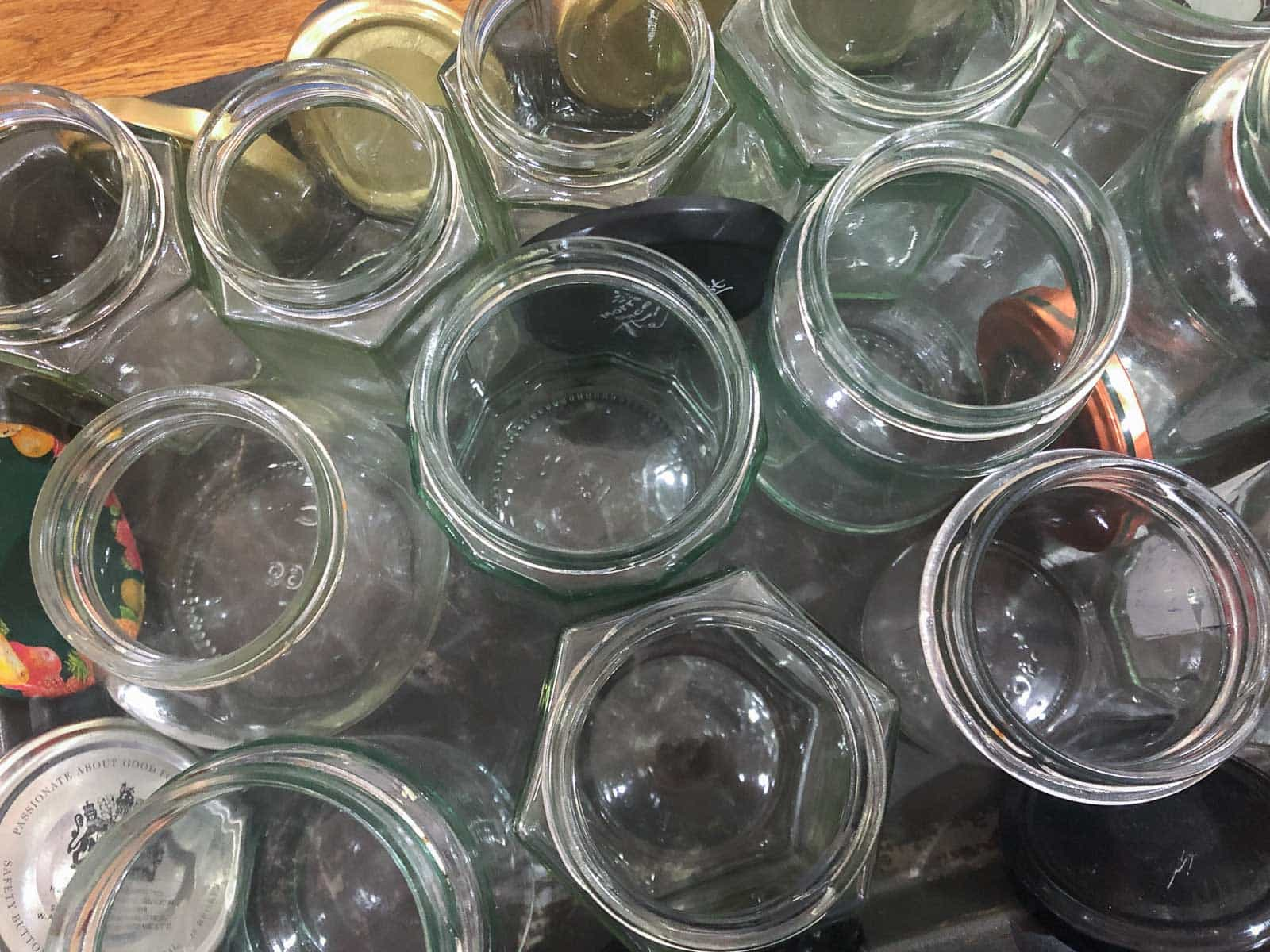
Filling the jam jars:
Finally take real care when decanting the molten jelly liquid into jars. You do not want to burn yourself, nor spill this liquid. I like to keep my jars in a metal baking tray with sides, that way if I do spill a little it doesn't run everywhere.
I also recommend using a jam funnel. The funnel is placed on top of the empty jam jar. It has a wide lip which then funnels the hot liquid down into the jar.
Place a wax jam disc over the top of the jam/jelly, this keeps the jam fresh and keeps air from spoiling it. Seal with a tight fitting lid and set aside to cool before labeling.
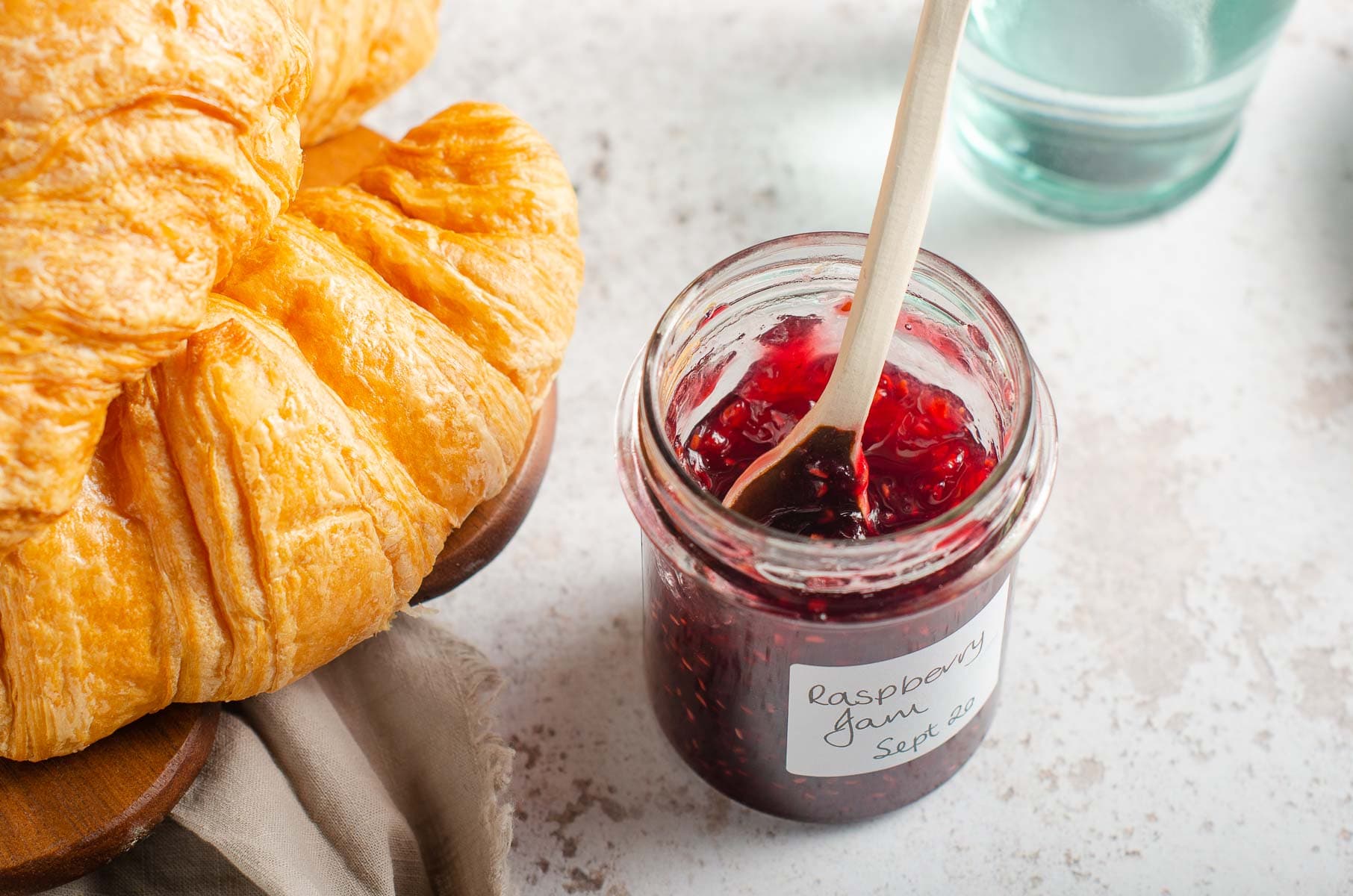
How long can you store raspberry jam?
Once jarred, label and date your jars of raspberry jam. They can be stored in a cool, dry cupboard for up to a year.
Other uses for raspberry jam?
Scottish raspberry jam tastes great spread on warm toast or on freshly baked scones, which is my absolute favourite way to enjoy it.
However, don't be limited by thinking jam can only be used as a spread! It's great used in baking!
This Scottish raspberry jam adds a deliciously fruity element to baked cakes and tarts. I prefer raspberry jam over strawberry jam when making a simple sponge cake like a Victoria Sponge Cake.
I also love Bakewell tart, raspberry jam being a perfect match for sweet almond frangipani.
Pin the recipe:
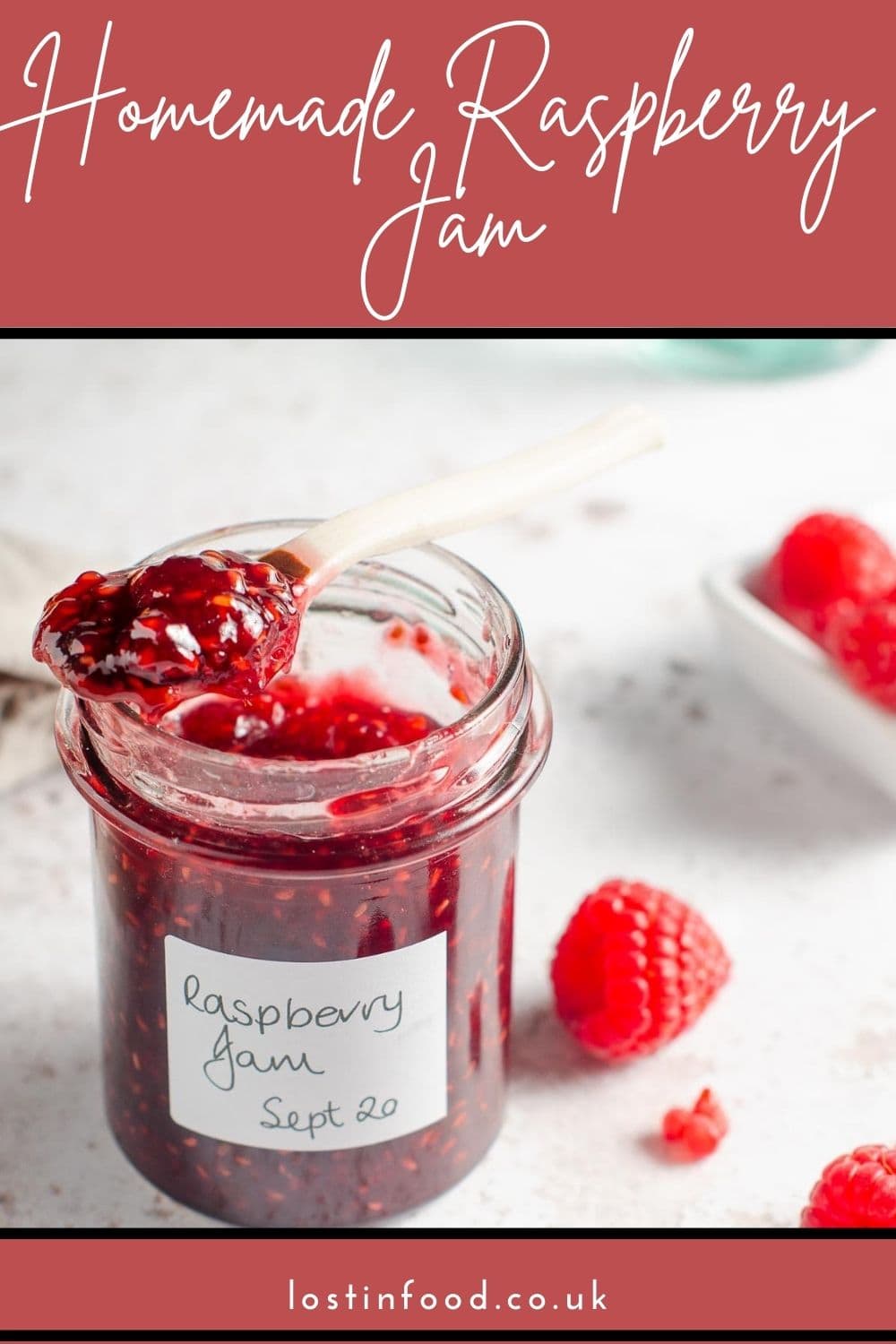
Additional recipe suggestions:
If you like this recipe then try some of our other jam recipes:
- Scottish Strawberry Jam
- Rhubarb & Ginger Jam
- Blackberry (Bramble) Jelly
- Blackcurrant Jelly
- Apple Jelly
Jams and jellies taste great with some fresh home bakes:
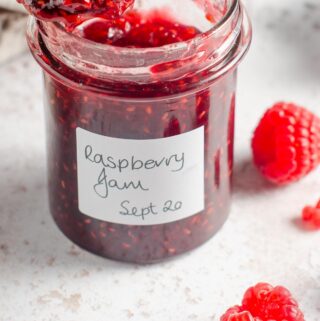
Scottish Raspberry Jam
Equipment
- Large jam pan or stock pot
- 4 450g sterlised jars
- Thermometer
- Jam funnel (optional)
- Wax paper discs (for setting on top of jelly)
Ingredients
- 1 kg raspberries
- juice of one lemon
- 1 kg granulated sugar
Instructions
Set up equipment
- Before you start get your equipment ready and set up. You will need a jam pan or a large stock pot for boiling the jam.
Sterilise jars
- Sterilise your jars and lids (ensure lid is separate to jar). My preferred method is to put them through a cycle in my dishwasher, unloading them while still hot onto an ovenproof tray. Place them in an oven at 170C/150CFan until needed.
- Place a saucer in the freezer for testing the jam later.
Make the raspberry jam
- Gently wash the raspberries and place them in a large stock pot. Juice the lemon and add to the raspberries and place them on the hob over a medium heat. [Raspberries are not naturally high in pectin so lemon juice is added to the jam to help it set. See further note on sugar in the recipe post.]
- Once the raspberries come to a simmer they will soften and the juices will start to run. Add the sugar to the fruit and gently stir through until dissolved. Once the fruit has softened mash the fruit down to the consistency that you like to eat. Some people like a smoother jam, others prefer to leave some of the fruits whole, it is entirely personal choice.
- Now increase the heat and bring to the boil to get a good rolling boil. This is really important as a rolling boil is required to get the jelly to the right temperature for setting. Try not to stir the liquid as stirring will only reduce the temperature. As you are heating the liquid skim off an scum that may appear, whilst doing you no harm it doesn't look good once set. You want to achieve a nice clear jam.
Testing the set of the jam
- Here comes the difficult bit, knowing when to take the jam off the heat. There are a number of tests, if using a jam thermometer the setting point for jam is around 104.5C/220F. Use a jam thermometer to let you know when the jam is ready.
- When ready to test the jam take the pan off the heat until you test the set. This will stop the jam from cooking too much while you test.
- It is then worth doing the wrinkle test. If you placed a plate in the freezer before you started making jam, take it out when you think it is almost ready to set. Spoon some jam onto the cold plate, pop it back in the freezer for a minute or two, then take it back out and push the jam with my finger to see if it wrinkles. If it does then the jam is ready.
- If you want a really firm set the wrinkle will stay in place after you have removed your finger. [This is the most difficult part of the process and it is something that becomes easier over time as your begin to know what to look for.]
- If you think that the jam is a little runny and loose, return the pan to the heat and get it back on a rolling boil for another 10 minutes and test again.
- When ready to pot up, remove the pan from the heat, skim off any remaining scum and set the pan aside for 10 minutes to cool a little. By allowing the jam to sit, the fruit will settle a little and this results in better distribution of fruit when you come to pot up the jam.
- Now pot the jam into the sterilised jars. Take care as the liquid is very hot, use a jam funnel over the top of the jars to get the jam cleanly into the jars and avoid spillage. Next place a wax paper disc on top as it prevents the jam drying out and also stops any mould from forming. Seal tightly with a screw on lid and set aside to cool. Once cool label the jam and store in a cool, dry place. The jam should keep for at least year stored like this.
Notes
• Please note that the nutrition information provided above is approximate and meant as a guideline only •


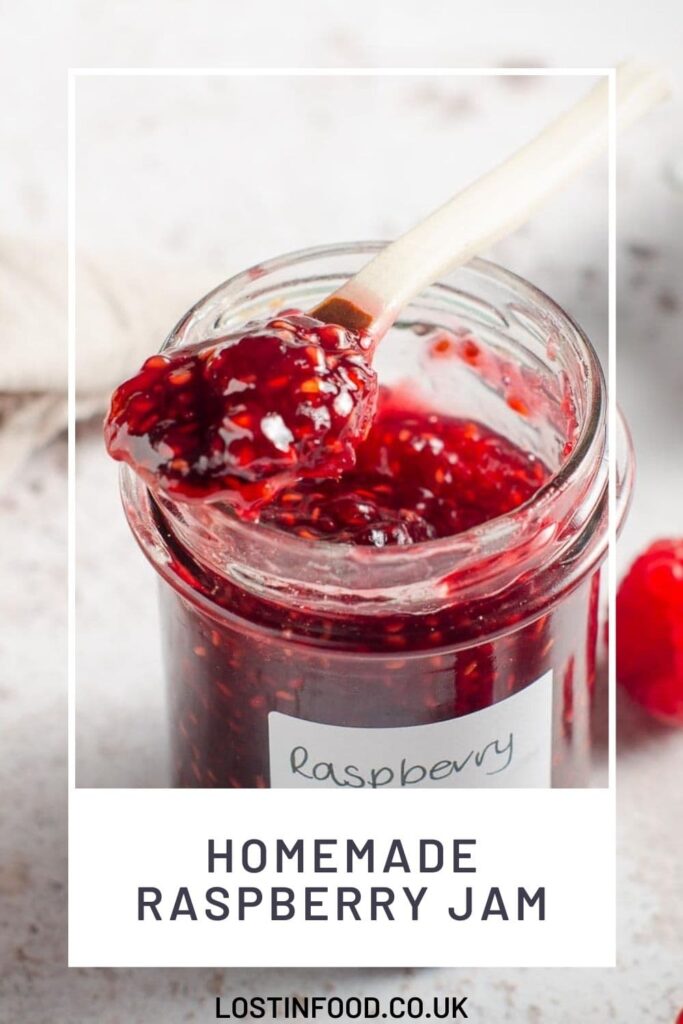
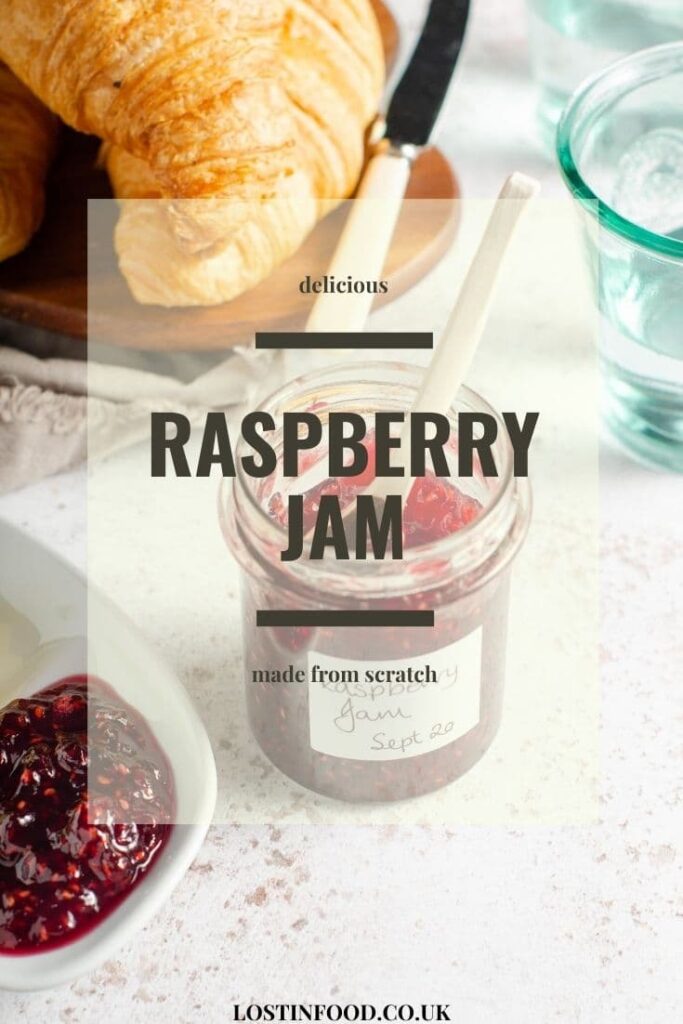


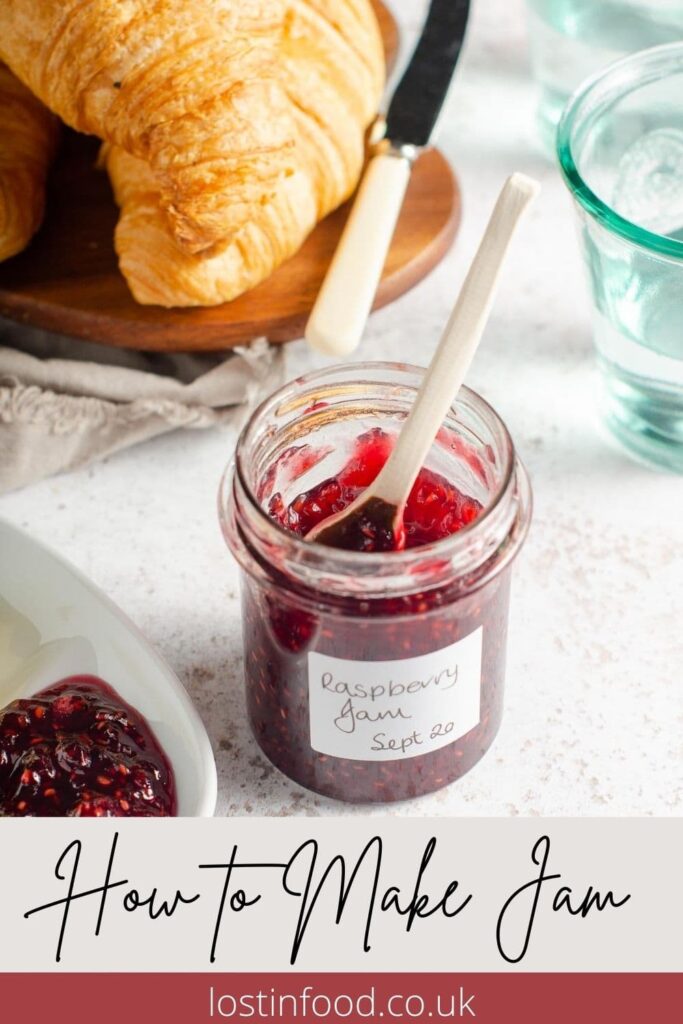
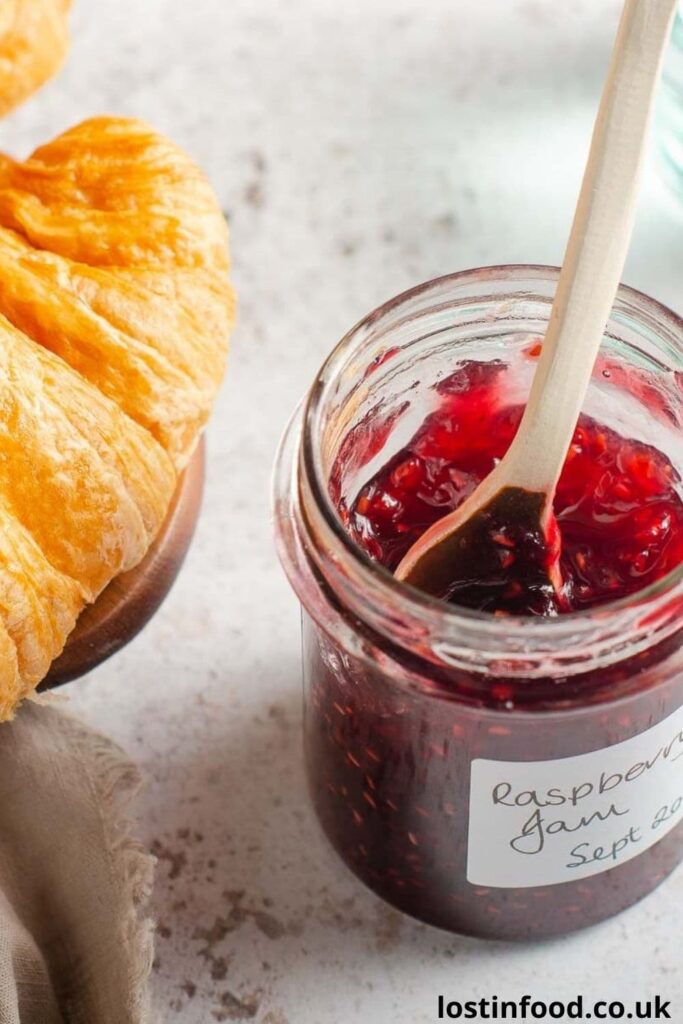
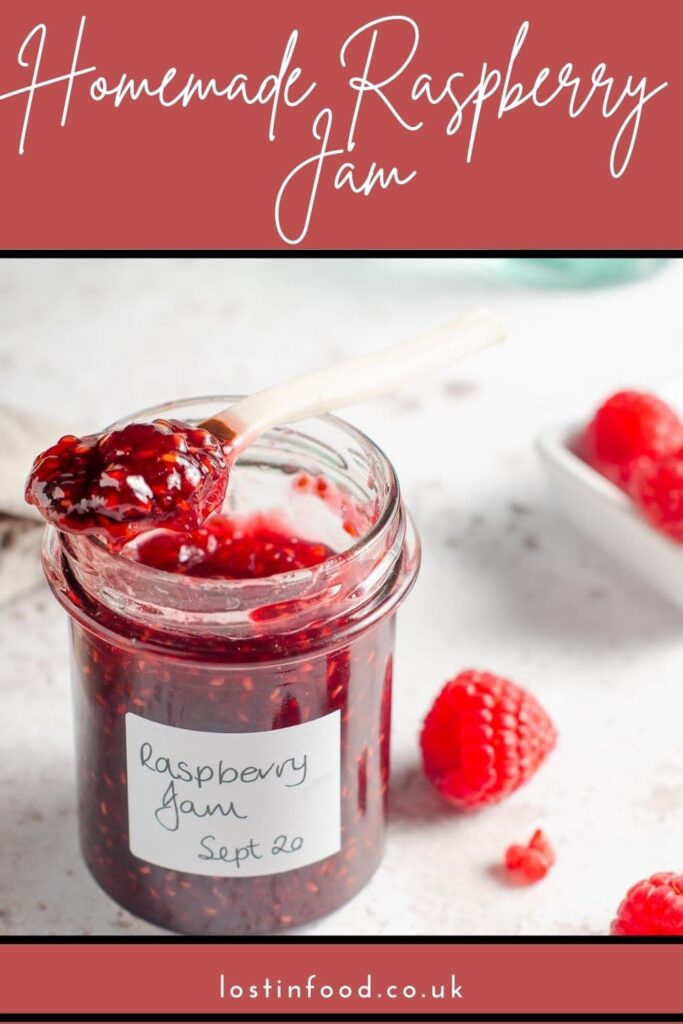
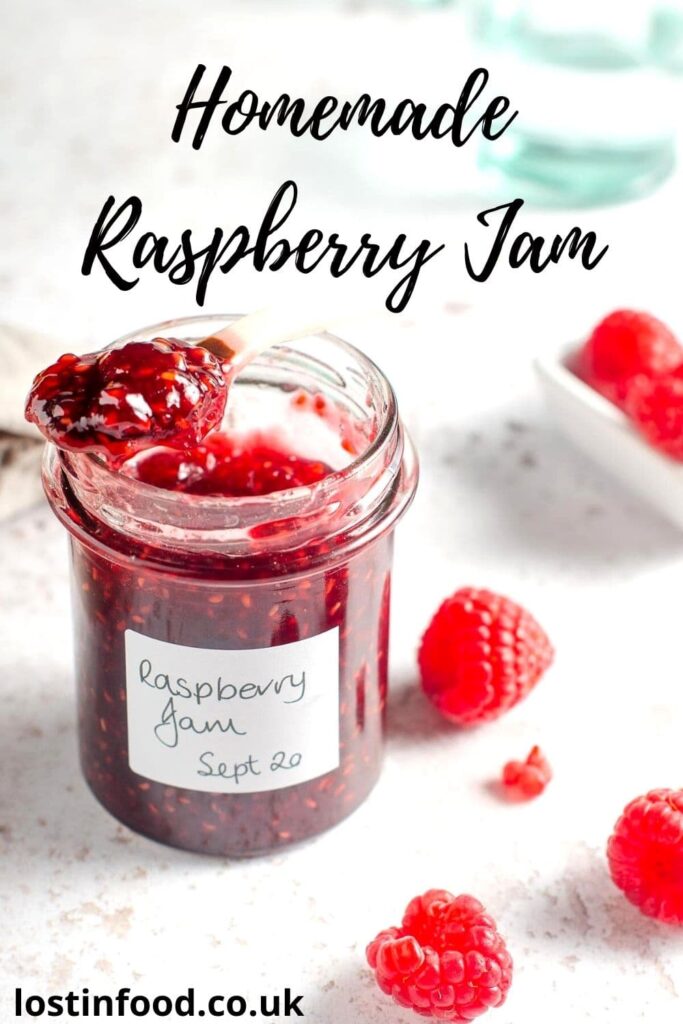
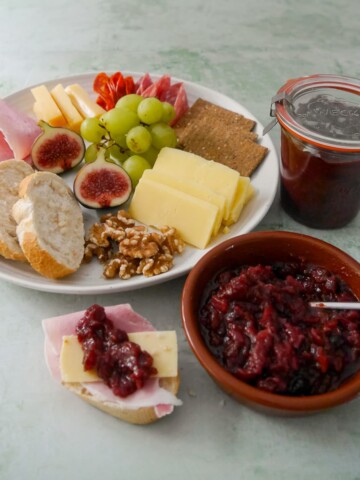
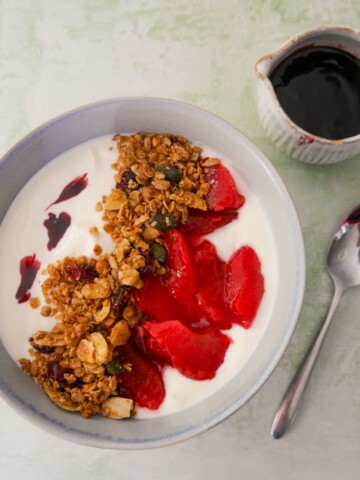

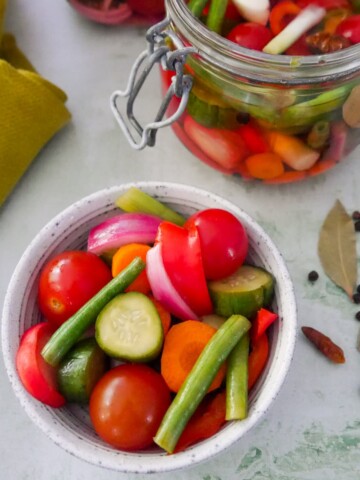
Charlie says
Making some myself at the moment in Lanarkshire and wanted to see how other people do it, this is a clear and accurate guide, thanks for taking the time to share with people.
Lesley says
Thank you Charlie, I follow the same method my mum taught me. Jam is fairly easy to make, but a lot of people are put off so I think it helps to break the process down.
David says
Thank you very much for this recipe Lesley. It's easy and delicious!
I use granulated sugar to make both marmalade and blackberry jam. But if I make strawberry jam I use jam sugar which works out quite expensive.
So I was nervous that using granulated sugar would mean your raspberry jam recipe wouldn't set. But, as you know, it does.
I've made it twice now using Tesco short shelf life raspberries. It does still work out expensive though - I have to give a jar away to everyone who tries it!
Lesley says
Thank you for taking the time to write such a lovely review, that put a smile on my face.
My mum never used jam sugar, always granulated sugar, and I followed what she did. Jam sugar is expensive and I'm not keen on the pectin. What I do with my strawberry jam is sometimes add some lemon juice to help it set, you could give that a go.
Raspberries are expensive, as are a lot of berries, even in season. I'm lucky as I live very close to a berry farmer and as well as selling their beautiful fruits, they also sell huge bags of frozen jam berries. Frozen berries are great to use in jam and you can sometimes find these on a cheaper deal than buying fresh. However, you are right, as much as I love making jam, it's not cheap! Especially as, like you, I give a lot of it away as gifts!
Lesley says
Have a couple of raspberry bushes growing in my back garden and there was quite a bit of fruit on them. Decided to pick it before the birds/bugs got to them. Only ended up with about 250g of fruit and this recipe worked perfectly to make 1 very beautiful looking and amazing taste jar of jam. Was so simple to follow and to adjust to what I needed.
Lesley says
I'm really please to hear that Lesley. Yes, if you grow any soft fruits in your garden you've got to get in there quick before the birds get to them. With berries that fresh your jam will have tasted amazing.
alison says
Found your recipe and enjoyed reading it +++ Although I make a lot of jams it was very refreshing to read your recipe and a very comprehensive non patronising style -explained the process really clearly and I’d highly recommend it to a first time jam maker !
8 full jars of nicely set delicious jam from my still fruiting autumn welsh raspberries (2kg)
Diolch yn fawr iawn .
Lesley says
Thank you very much for your feedback Alison I really do appreciate your comments. I love making jam but I think the process puts a lot of people off so I tried to simplify it by taking away some of the fear and keeping things to the point. I love raspberry jam and glad to hear you still have plenty autumn fruits - enjoy.
Luisa says
Hi Lesley,
What do you do with the jam in the pan while you are testing using the saucer? Should I remove it from the heat? Or just leave it over a low heat? Thanks.
Lesley says
Hi Luisa, that is a great question and one I'm missing from the recipe card - thank you for picking this up I'll get that amended for all our jam recipes. Ok, here's the answer. When testing the set you should take the pan off the heat as you don't want it cooking further if the jam is set. If the jam is still a bit loose and runny, place the pan back over the heat and bring it back to a rolling boil and cook for another 10 minutes and check it again. Lesley
Nic | Nic's Adventures & Bakes says
Thanks for sharing, this looks a great way to use up lots of raspberries from a bumper crop or cheap ones 🙂
Lesley says
Thank you Nic, I always buy jam raspberries from my local fruit farm as they are a lot cheaper. You can also use frozen berries too.
Karen Booth says
Raspberry jam is my favourite jam, especially when it is homemade too!
Lesley says
Thank you Karen, a real favourite in our house too.
Kat (The Baking Explorer) says
Perfect looking jam!
Lesley says
Thank you very much Kat.
Cat says
Raspberry jam is my absolute favourite! Your clear instructions and helpful tips are perfect for a jam novice like me. So delicious.
Lesley says
Thank you Cat, I totally agree - raspberry jam is very popular with my family and friends.